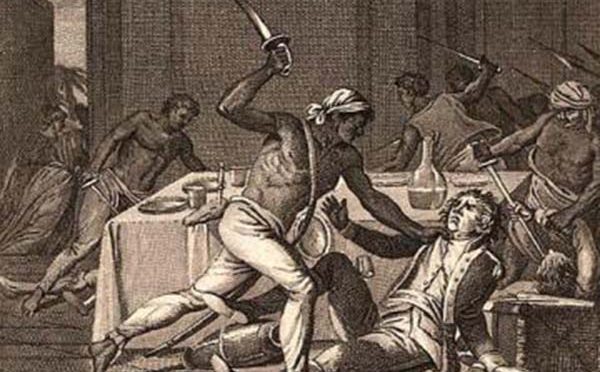“Each one teach one” and “Know your history” are just some of the well known mantras that We at Black Advancement Inc. take seriously. We would like to take this opportunity to continue to spread the knowledge of the lesser taught and known annals of history and factoids and bring them to the people. Feel free to use these interesting tidbits where ever you see fit and please, always remember to advance the conversation!
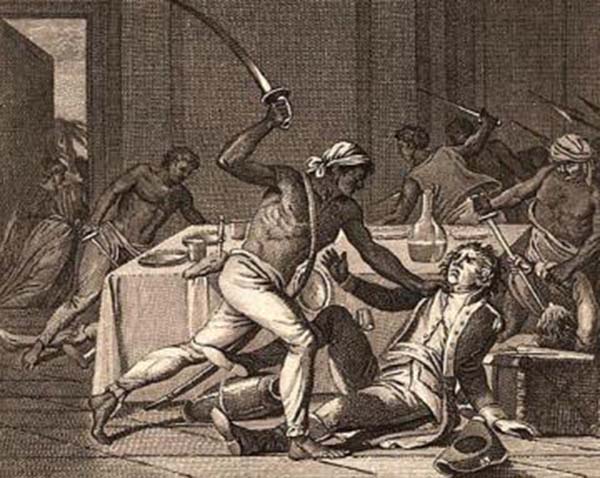
The Freedman’s Savings Bank Debacle
Upon the completion of the Civil War, America was suddenly faced with the problem of millions of new citizens to instate, workers to provide opportunity for, and the United States government
The Legacy of the “Lost Cause” Narrative
On April 9, 1865 America had closed the book on it’s bloodiest war, it’s greatest sin, and solidified the idea of an United States of America….almost. At the end of the Civil War, the Confederates General Robert E. Lee gave his final order through a speech in which he states “After four years of arduous service, marked by unsurpassed courage and fortitude, the Army of Northern Virginia has been compelled to yield to overwhelming numbers and resources.” 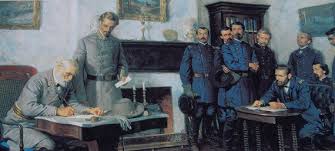 Lee’s comments, in a not so subtle way, communicate his belief the Confederates only lost the war because they were overwhelmed. This belief by Lee and many of his generals and soldiers, soon became widely accepted through the publication of a book entitled The Lost Cause: A New Southern History of the War of the Confederates by an influential wartime editor for the Richmond Examiner Edward A. Pollard.
Lee’s comments, in a not so subtle way, communicate his belief the Confederates only lost the war because they were overwhelmed. This belief by Lee and many of his generals and soldiers, soon became widely accepted through the publication of a book entitled The Lost Cause: A New Southern History of the War of the Confederates by an influential wartime editor for the Richmond Examiner Edward A. Pollard.
The “Lost Cause” comprised of six tenets: 1. Secession, not slavery, caused the Civil War – 2. Blacks were “faithful slaves,” loyal to their masters and the Confederate cause and unprepared for the responsibilities of freedom. – 3. The Confederacy was defeated militarily only because of the Union’s overwhelming advantages in men and resources. – 4. Confederate soldiers were heroic and saintly. – 5. The most heroic and saintly of all Confederates was Robert E. Lee. – 6. Southern women were loyal to the Confederate cause and sanctified by the sacrifice of their loved ones. 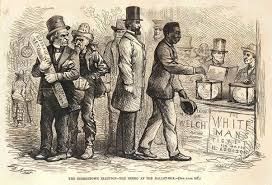 This propaganda only increased after the withdrawal of Union soldiers from the South and the death of Lee in 1870. Prior to 1870, the South was occupied by the Union, which implemented regulations that were perceived by the family and surviving soldiers as being discriminatory such as the regulation prohibiting the recognition of dead Confederate soldiers. These humiliations combined with Blacks beginning to flourish politically, financially, and socially during the Reconstruction Era, fostered an even deeper resentment for the families and descendants of the Confederate soldiers.
This propaganda only increased after the withdrawal of Union soldiers from the South and the death of Lee in 1870. Prior to 1870, the South was occupied by the Union, which implemented regulations that were perceived by the family and surviving soldiers as being discriminatory such as the regulation prohibiting the recognition of dead Confederate soldiers. These humiliations combined with Blacks beginning to flourish politically, financially, and socially during the Reconstruction Era, fostered an even deeper resentment for the families and descendants of the Confederate soldiers.
To combat these actions, the wives of these deceased Confederate soldiers began to organize, recruit, and host fundraisers to purchase land to construct cemeteries, hiring recently freed Black men to dig up and rebury the remains of buried Confederates. These makeshift memorials became more and more formal with surviving Confederate soldiers lining up in ranks at the graves of their fallen comrades and vowing the South will rise again. Although this was deemed troublesome by the Union troops that occupied the South, nothing was done to prevent these memorials. 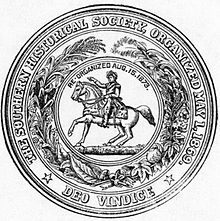 Although the grieving widows started the emphasis on celebrating the Confederates, Jubal Early made it his mission to immortalize them. Know for his rousing speeches on the “Lost Cause” Early, channeled his energy into groups dedicated to the erection of statues of Confederate “heroes” such as the United Daughters of the Confederation (UDC) and the group he founded the Southern Historical Society. Early became the driving force behind the construction of a 60 foot statue of Robert E. Lee in the now defunct capital of the Confederate States, Richmond, Virginia.
Although the grieving widows started the emphasis on celebrating the Confederates, Jubal Early made it his mission to immortalize them. Know for his rousing speeches on the “Lost Cause” Early, channeled his energy into groups dedicated to the erection of statues of Confederate “heroes” such as the United Daughters of the Confederation (UDC) and the group he founded the Southern Historical Society. Early became the driving force behind the construction of a 60 foot statue of Robert E. Lee in the now defunct capital of the Confederate States, Richmond, Virginia.
The women of this movement continued to expand and legitimize, and eventually become the aforementioned and still functioning organization, UDC. 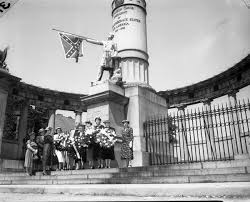 The UDC is responsible for the erection of the majority of the 15,000 Confederate memorials which are spread throughout the South. However, UDC’s greatest legacy was their reeducation of White southern youth in the curriculum of the “Lost Cause.” The UDC set up scholastic competitions, influence the school boards, organized and spoke on lecture circuits, and taught “Lost Cause” history to the “children of the Confederacy.” During this period the Reconstruction Era was coming to an end and the rights of Black people began to dwindle as the “Lost Cause” narrative made its way through the nation, and the UDC’s membership would peak to 100,000 members eventually.
The UDC is responsible for the erection of the majority of the 15,000 Confederate memorials which are spread throughout the South. However, UDC’s greatest legacy was their reeducation of White southern youth in the curriculum of the “Lost Cause.” The UDC set up scholastic competitions, influence the school boards, organized and spoke on lecture circuits, and taught “Lost Cause” history to the “children of the Confederacy.” During this period the Reconstruction Era was coming to an end and the rights of Black people began to dwindle as the “Lost Cause” narrative made its way through the nation, and the UDC’s membership would peak to 100,000 members eventually.
 By spreading the narratives of the Confederacy being about states rights and the mythical “happy slaves” tales,they were able to impact not only southern Whites attitudes towards slavery but the northern Whites attitudes as well. This became abundantly clear when advertises began to use the stereotypical depictions of Black people for their products such as Uncle Ben’s rice, Aunt Jemima pancake mix, or Cream of Wheat. Perhaps the greatest promotion and culprit to the spreading of the “Lost Cause” was creation of the motion picture.
By spreading the narratives of the Confederacy being about states rights and the mythical “happy slaves” tales,they were able to impact not only southern Whites attitudes towards slavery but the northern Whites attitudes as well. This became abundantly clear when advertises began to use the stereotypical depictions of Black people for their products such as Uncle Ben’s rice, Aunt Jemima pancake mix, or Cream of Wheat. Perhaps the greatest promotion and culprit to the spreading of the “Lost Cause” was creation of the motion picture. 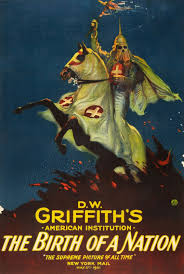 The first blockbuster in history was a movie all about the “Lost Cause” named Birth of a Nation, which was released in 1915. This movie revolved around all the tired troupes of the “Lost Cause” capped by the Ku Klux Klan playing the heroes. This movie was so successful even President Woodrow Wilson watched it commenting, “It’s like writing history with lightning. My only regret is that it is all so terribly true.” Woodrow Wilson also forgave the South at the Blue & Gray Reunion at Gettysburg in 1913, no Black units were allowed. The full normalization of the “Lost Cause” narrative was realized in the form of another blockbuster named “Gone With The Wind,” which was a homage to southern sympathy.
The first blockbuster in history was a movie all about the “Lost Cause” named Birth of a Nation, which was released in 1915. This movie revolved around all the tired troupes of the “Lost Cause” capped by the Ku Klux Klan playing the heroes. This movie was so successful even President Woodrow Wilson watched it commenting, “It’s like writing history with lightning. My only regret is that it is all so terribly true.” Woodrow Wilson also forgave the South at the Blue & Gray Reunion at Gettysburg in 1913, no Black units were allowed. The full normalization of the “Lost Cause” narrative was realized in the form of another blockbuster named “Gone With The Wind,” which was a homage to southern sympathy.
Opinion Piece: Many of the White children who came of age during this era, specifically in the South, were feed a steady diet of sympathy for the Confederates, Blacks were too unruly and ill prepared to be free, and that the South will rise again. The complicit and accepted attitude of these racist beliefs and ideas by not only these White southerns, but also the United States government played a large role in the crippling of the health and wealth of the Black Community greatly. The views adapted through the white-washing of the Confederacy and the generations thereafter directly established laws, prevented rights, and erected statues in a misguided effort to relive a time when Black people were seen as no more than property. In many ways this has lead to the regression of America and has made it extraordinarily difficult for Black people to achieve the lofty goals of life, liberty, and the pursuit of happiness. 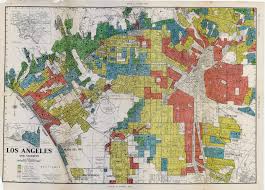 This abhorrent mindset was the reason systemically racists policies and laws such as the Jim Crow laws and red-lining policies, which prevented Blacks from moving in to certain properties, created a wealth gap between the races that may never be eliminated without serious intervention from the very same government that endorsed these policies for decades.
This abhorrent mindset was the reason systemically racists policies and laws such as the Jim Crow laws and red-lining policies, which prevented Blacks from moving in to certain properties, created a wealth gap between the races that may never be eliminated without serious intervention from the very same government that endorsed these policies for decades.
Sources and information used in our “The Legacy of the Appeasement of the Confederacy” was derived from: [1]Uncivil Podcast, Episode 6 entitled “The Spin”, hosted by journalists Jack Hitt and Chenjerai Kumanyika [2]https://www.salon.com/2018/10/06/7-things-the-united-daughters-of-the-confederacy-might-not-want-you-to-know-about-them_partner/ [3]https://www.encyclopediavirginia.org/lost_cause_the
